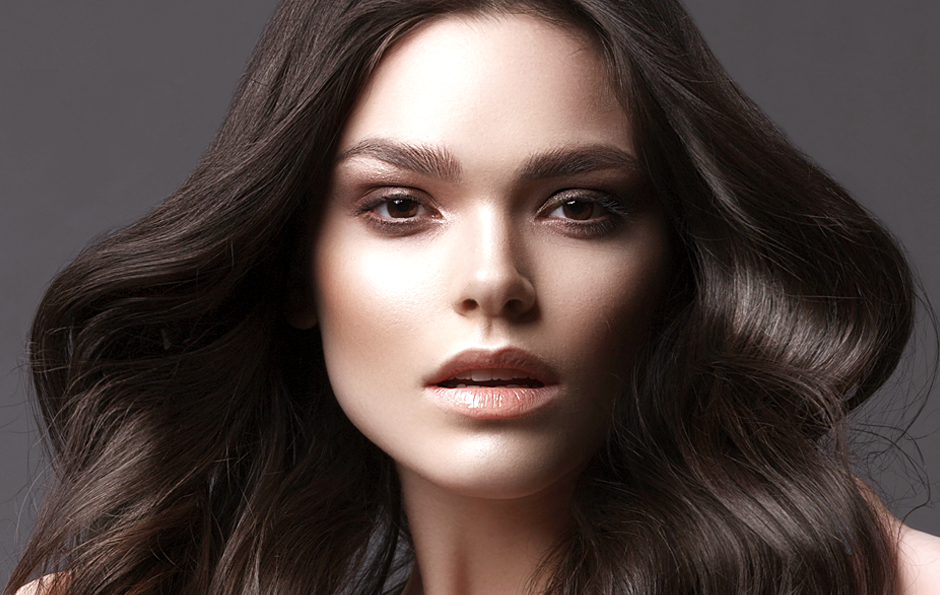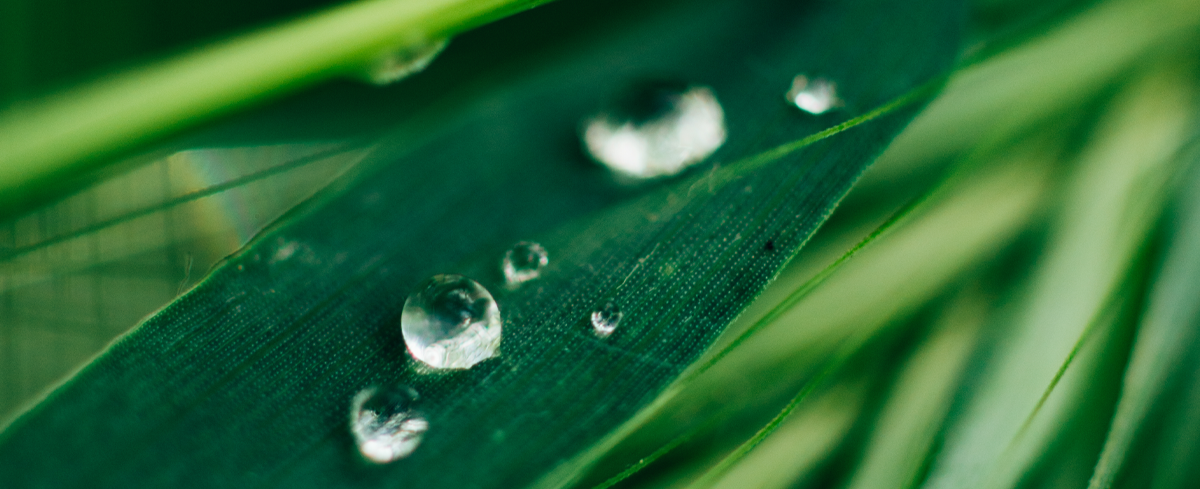 A NATURAL PLANT ALTERNATIVE: PHYTOKERATIN Hair has a threadlike structure which, from a chemical point of view, is made up mainly of proteins, water, lipids, pigments and trace elements. One of the proteins is keratin, a fundamental building block for our hair. Keratin is the main component of hair, it is a tough, fibrous protein (hence its name which, in Greek, means “horn”) and is insoluble in water. It is made up of long chains of amino acids with vitamins and trace elements between them. In the human body, keratin is found not only in hair but in other tissues such as skin and its appendages like hairs and nails. The keratin in our hair is a lot harder than that found in the stratum corneum of the epidermis, as it contains a very high percentage of cysteine, an amino acid rich in sulphur that confers exceptional strength. Just like a wall is made up of bricks, keratin, being a protein, is composed of a sequence of simpler elements: amino acids. Eighteen amino acids to be precise, the most important of which are cysteine, serine, glutamic acid, threonine, glycine and arginine, that are initially arranged in long chains and then in more complex structures. When the amino acids in the different chains interact, the keratin filaments bond and form a helical structure. The main bonds that make up the structure are disulfide bonds which are formed by sulphur atoms in the cysteine molecules. There are also salt and hydrogen bonds which are not as strong but help make up the helix structure. This special structure, whose proper name is alpha-helix, gives the keratin greater cohesion and therefore rigidity, stability and strength, while the hydrogen bonds also give it a certain amount of flexibility. In the next level, four alpha-helices are twisted together to form protofibril, held together by the sulphide bonds. These filaments are then grouped together to form other kinds of structures which make up the cortex layer. Keratin is synthesized by specialised cells called keratinocytes and the process is regulated by hormones, genetic factors and vitamin intake. As a result, dietary deficiencies or enzymatic defects of the pathways of cholesterol and fatty acid synthesis can lead to abnormalities in the keratinization process, thereby causing structural defects in the hair shaft. Keratin plays a key role in hair as it determines its appearance and structure. In other words, if our keratin is healthy, our hair is too. Its strength and solidity, however, can be threatened if hair comes under attack. Damage is caused mainly by aggressive chemical substances, prolonged exposure to environmental factors (including the sun’s rays, if hair is not protected properly), atmospheric pollutants, physical and heat treatments to hair (perms, flat ironing or overly hot hair dryers) and certain categories of drugs. Finally, stress and dietary deficiencies can also compromise the keratin structure of hair. These problems lead many people to undergo keratin treatment, which is especially popular in cosmetics to deal with frizzy hair. The treatment consists of hydrolyzed keratin which is broken down enzymatically into smaller sized units to make it more effective on the hair fibre. Few people, however, realise that it is a product of animal origin found in cows’ hooves and sheep’s wool. Animal keratin is often added to hair treatments and products such as shampoos, conditioners or complete treatments to make hair smoother and silkier and specially to control frizz.
A NATURAL PLANT ALTERNATIVE: PHYTOKERATIN Hair has a threadlike structure which, from a chemical point of view, is made up mainly of proteins, water, lipids, pigments and trace elements. One of the proteins is keratin, a fundamental building block for our hair. Keratin is the main component of hair, it is a tough, fibrous protein (hence its name which, in Greek, means “horn”) and is insoluble in water. It is made up of long chains of amino acids with vitamins and trace elements between them. In the human body, keratin is found not only in hair but in other tissues such as skin and its appendages like hairs and nails. The keratin in our hair is a lot harder than that found in the stratum corneum of the epidermis, as it contains a very high percentage of cysteine, an amino acid rich in sulphur that confers exceptional strength. Just like a wall is made up of bricks, keratin, being a protein, is composed of a sequence of simpler elements: amino acids. Eighteen amino acids to be precise, the most important of which are cysteine, serine, glutamic acid, threonine, glycine and arginine, that are initially arranged in long chains and then in more complex structures. When the amino acids in the different chains interact, the keratin filaments bond and form a helical structure. The main bonds that make up the structure are disulfide bonds which are formed by sulphur atoms in the cysteine molecules. There are also salt and hydrogen bonds which are not as strong but help make up the helix structure. This special structure, whose proper name is alpha-helix, gives the keratin greater cohesion and therefore rigidity, stability and strength, while the hydrogen bonds also give it a certain amount of flexibility. In the next level, four alpha-helices are twisted together to form protofibril, held together by the sulphide bonds. These filaments are then grouped together to form other kinds of structures which make up the cortex layer. Keratin is synthesized by specialised cells called keratinocytes and the process is regulated by hormones, genetic factors and vitamin intake. As a result, dietary deficiencies or enzymatic defects of the pathways of cholesterol and fatty acid synthesis can lead to abnormalities in the keratinization process, thereby causing structural defects in the hair shaft. Keratin plays a key role in hair as it determines its appearance and structure. In other words, if our keratin is healthy, our hair is too. Its strength and solidity, however, can be threatened if hair comes under attack. Damage is caused mainly by aggressive chemical substances, prolonged exposure to environmental factors (including the sun’s rays, if hair is not protected properly), atmospheric pollutants, physical and heat treatments to hair (perms, flat ironing or overly hot hair dryers) and certain categories of drugs. Finally, stress and dietary deficiencies can also compromise the keratin structure of hair. These problems lead many people to undergo keratin treatment, which is especially popular in cosmetics to deal with frizzy hair. The treatment consists of hydrolyzed keratin which is broken down enzymatically into smaller sized units to make it more effective on the hair fibre. Few people, however, realise that it is a product of animal origin found in cows’ hooves and sheep’s wool. Animal keratin is often added to hair treatments and products such as shampoos, conditioners or complete treatments to make hair smoother and silkier and specially to control frizz.  Medavita has always strived to formulate products that are kind to humans and the environment. For this very reason it has chosen to use the latest scientific discovery, phytokeratin, an innovative formula which is a valid plant-based alternative to animal proteins. Wheat proteins are called phytokeratin as they reproduce the benefits of animal keratin in dermocosmetics without any of the contraindications. These fragmented proteins are obtained from the gluten of partially hydrolyzed wheat and are therefore plant-based peptides with a low molecular weight obtained through enzymatic hydrolysis of wheat (triticum vulgare); in other words, the proteins are broken down into smaller parts by enzymes to give a product with enhanced penetration and affinity with the surface of the skin and hair. Phytokeratin provides exceptional hydration and nourishment to skin and the hair fibre, and has conditioning, thickening, detangling and fortifying properties for hair in particular. Wheat proteins make hair easier to comb and, at the same time, reduce damage caused by excessive brushing, restoring elasticity to hair and making the fibre more manageable. Studies have been conducted at dermatology centres and sensory tests carried out after treatments with phytokeratin to confirm these properties. As well as being a natural alternative to hydrolyzed animal keratin, plant-based keratin actually has better properties. It contains no fewer than 18 amino acids, including wheat and soy proteins, as well as three very important amino acids - arginine, serine and threonine – which are selected to recreate the same composition of keratin found in hair. Thanks to their low molecular weight, wheat proteins easily penetrate the hair shaft for enhanced body, shine and softness. Arginine is widely acknowledged to reinforce the hair fibre, making it stronger and more elastic and preventing breakage caused by dehydration and damage. Serine is a ceramide precursor and has antioxidant and conditioning properties, hydrating hair and protecting it against external aggressors. Finally, threonine is an essential amino acid which helps maintain protein balance in the body. It promotes collagen synthesis and has an anti-static and hydrating effect on hair. Hair plays a key role in our lives. It is not just an ornamental part of our bodies, but a symbol of elegance and strength. Looking after our hair means so much more than making it look great or following the latest fashion and choosing products which are kind to it, like those containing phytokeratin, is an important way of saying “I love my hair”… and “I love me”.
Medavita has always strived to formulate products that are kind to humans and the environment. For this very reason it has chosen to use the latest scientific discovery, phytokeratin, an innovative formula which is a valid plant-based alternative to animal proteins. Wheat proteins are called phytokeratin as they reproduce the benefits of animal keratin in dermocosmetics without any of the contraindications. These fragmented proteins are obtained from the gluten of partially hydrolyzed wheat and are therefore plant-based peptides with a low molecular weight obtained through enzymatic hydrolysis of wheat (triticum vulgare); in other words, the proteins are broken down into smaller parts by enzymes to give a product with enhanced penetration and affinity with the surface of the skin and hair. Phytokeratin provides exceptional hydration and nourishment to skin and the hair fibre, and has conditioning, thickening, detangling and fortifying properties for hair in particular. Wheat proteins make hair easier to comb and, at the same time, reduce damage caused by excessive brushing, restoring elasticity to hair and making the fibre more manageable. Studies have been conducted at dermatology centres and sensory tests carried out after treatments with phytokeratin to confirm these properties. As well as being a natural alternative to hydrolyzed animal keratin, plant-based keratin actually has better properties. It contains no fewer than 18 amino acids, including wheat and soy proteins, as well as three very important amino acids - arginine, serine and threonine – which are selected to recreate the same composition of keratin found in hair. Thanks to their low molecular weight, wheat proteins easily penetrate the hair shaft for enhanced body, shine and softness. Arginine is widely acknowledged to reinforce the hair fibre, making it stronger and more elastic and preventing breakage caused by dehydration and damage. Serine is a ceramide precursor and has antioxidant and conditioning properties, hydrating hair and protecting it against external aggressors. Finally, threonine is an essential amino acid which helps maintain protein balance in the body. It promotes collagen synthesis and has an anti-static and hydrating effect on hair. Hair plays a key role in our lives. It is not just an ornamental part of our bodies, but a symbol of elegance and strength. Looking after our hair means so much more than making it look great or following the latest fashion and choosing products which are kind to it, like those containing phytokeratin, is an important way of saying “I love my hair”… and “I love me”.
Discover Lotion Concentrée
Medavita Magazine Hair Style and more
- Categories
- News ed eventi
- Hair News
- Promos


Validate your login
Sign In
Registrati a "Medavita Salon Friends" e ricevi vantaggi e promozioni per i servizi in salone.
Create New Account